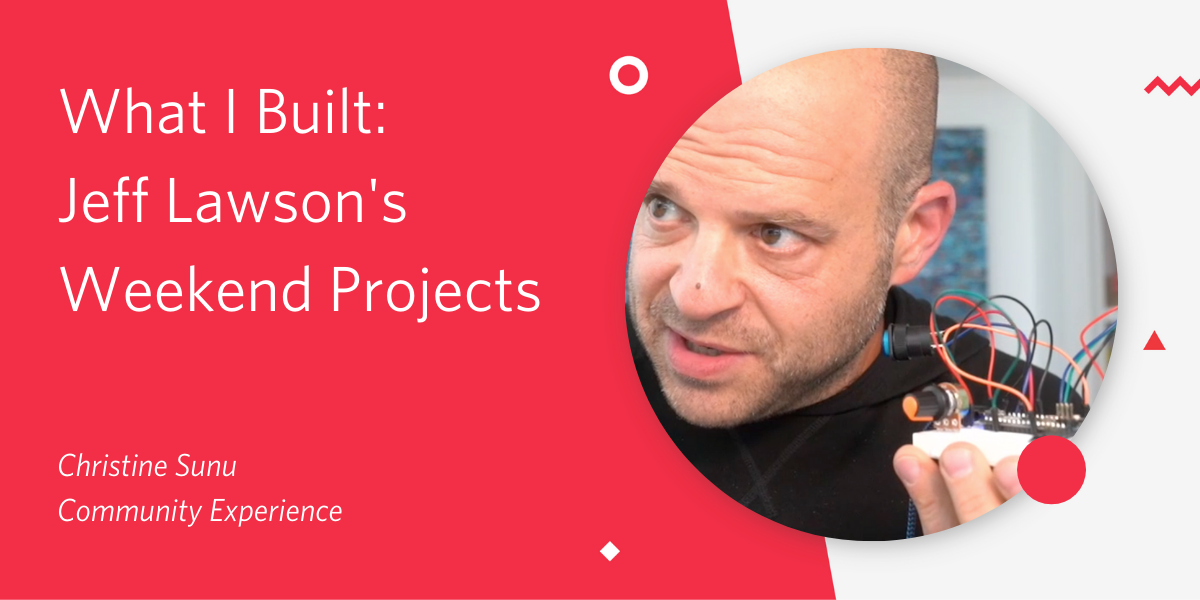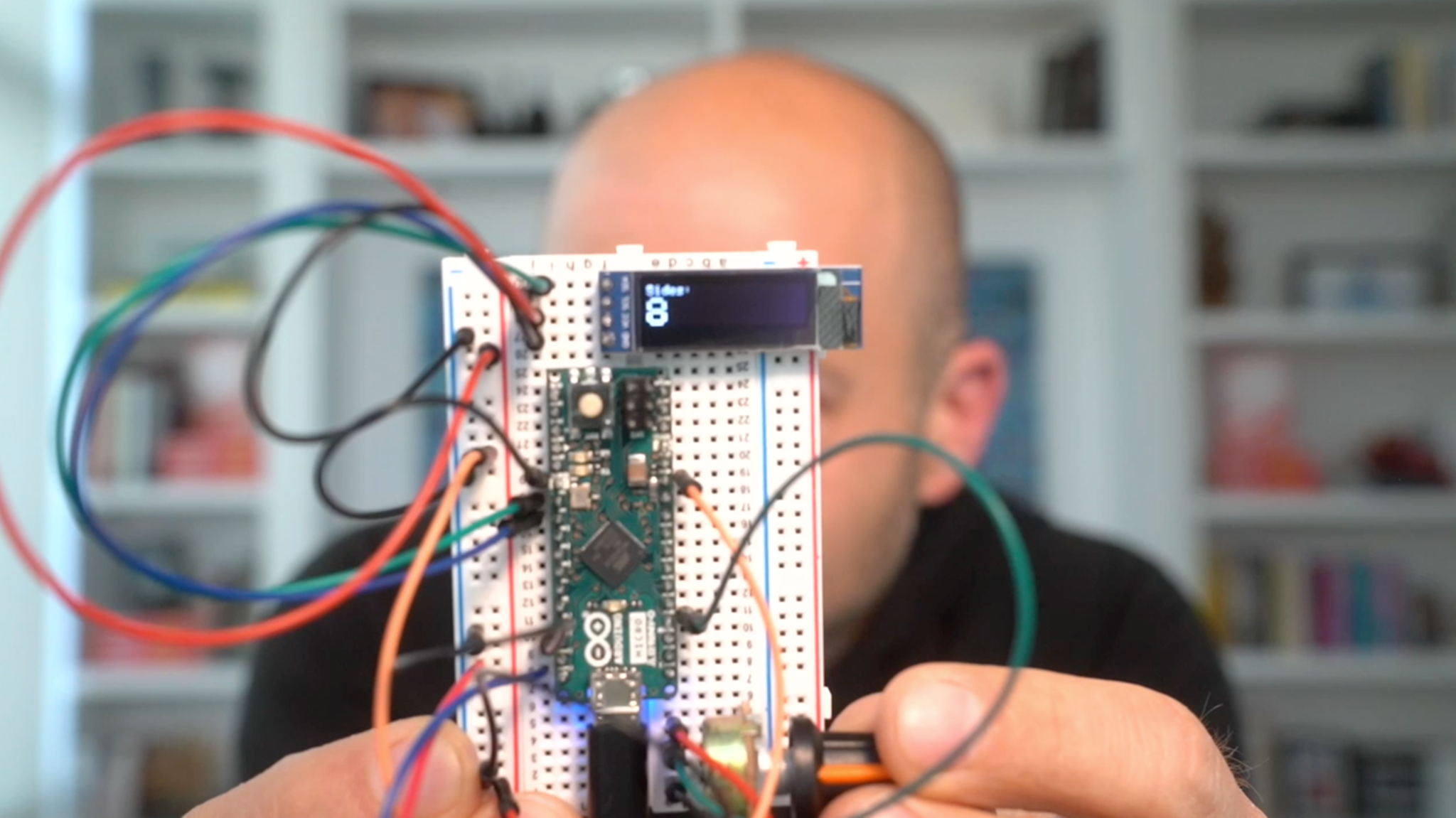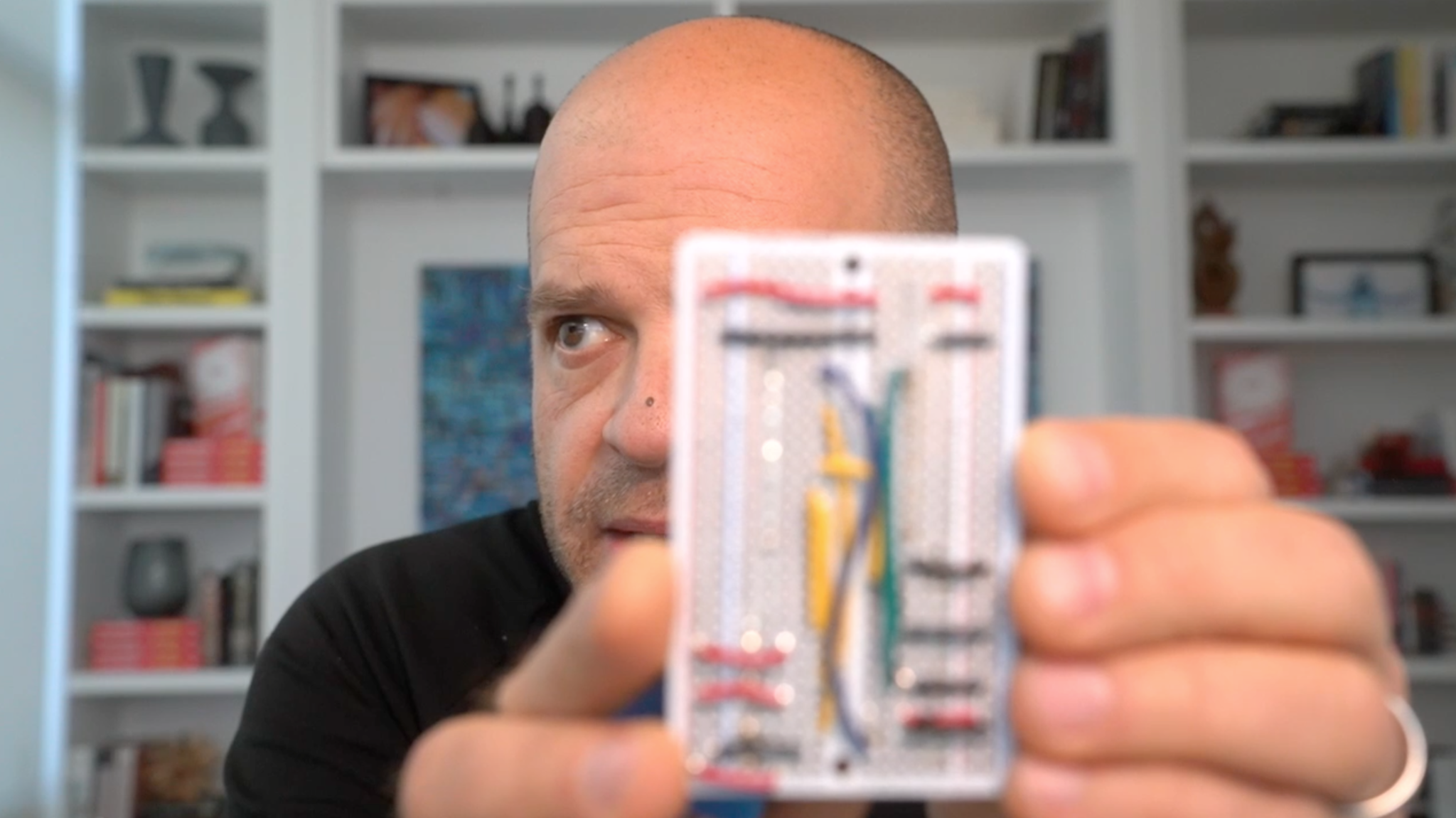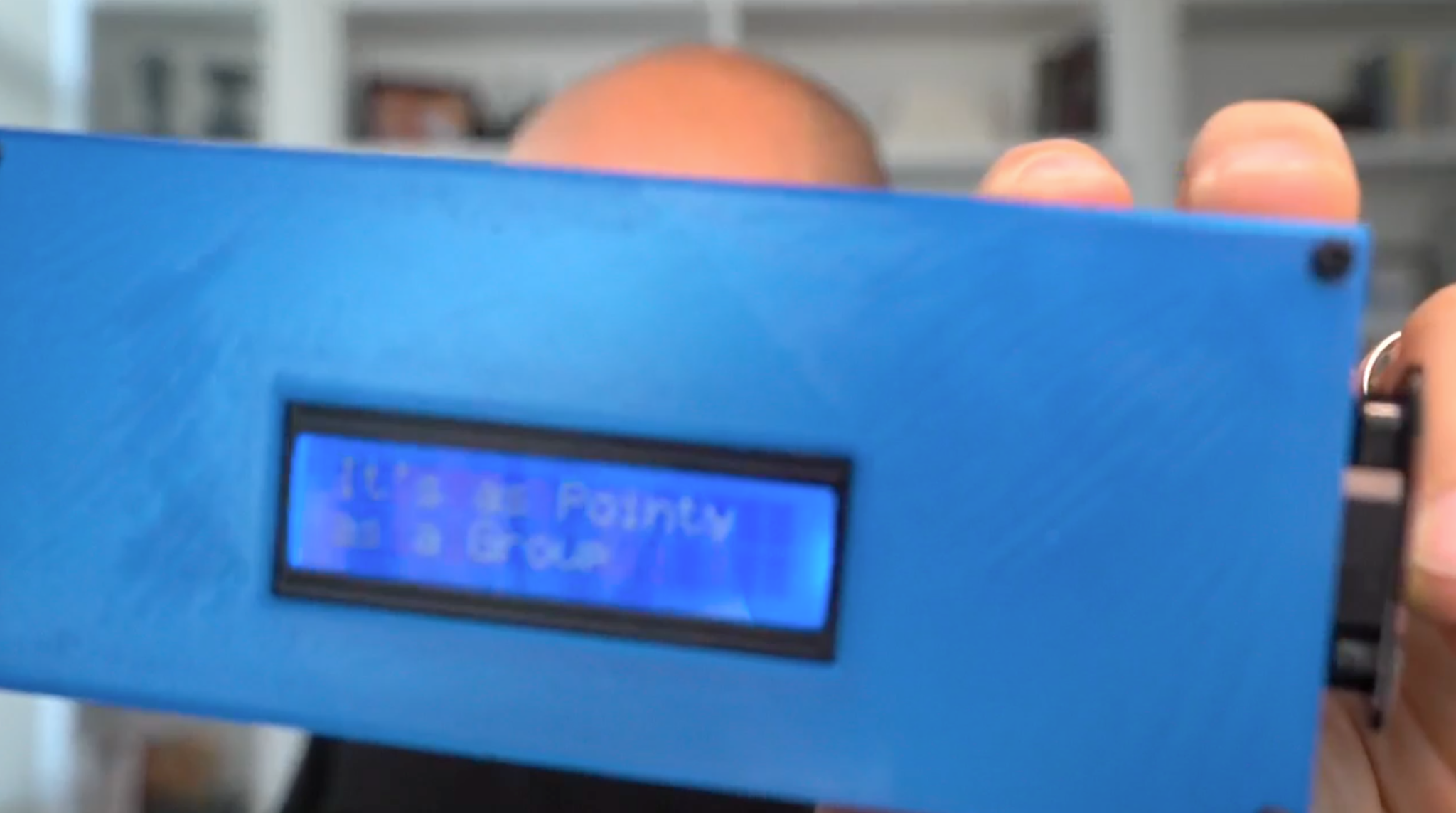What I Built: Jeff Lawson's weekend projects
Time to read: 6 minutes

Twilio often closes its events with a developer-focused sign-off: “We can’t wait to see what you build.”
This phrase is on my mind as we set up our remote interview with Twilio’s CEO, Jeff Lawson. Brent Schooley, a pandemic-tempered livestreaming expert, sets up to record high-quality video remotely. He developed this system while building for Twilio’s remote SIGNAL conference last year. While he does my mic check, I click through browser windows and close sixteen tabs for completed or abandoned projects, hardware hacks, and other idle Googling.
I’ve heard stories about building from Developer Relations teams before, but none have felt as genuine as those I’ve heard at Twilio. At this company, builders are in major supply. From engineering to marketing, we are moving and creating and iterating, setting up potential solutions, and reworking them together.
Jeff Lawson joins at 5:31 p.m. sharp.
“I gotta show you what I built this weekend,” he says.
He disappears off camera for a second and comes back with an armful of circuit boards and 3D printed parts. In a company of builders, it’s no surprise that Jeff is the leader.
Meet the Developer: Jeff Lawson
As a developer and executive, Jeff Lawson has an addiction to converting the intangible and difficult into the real and accessible.
“In the telecom industry, you know what phone numbers are called?” he asks.
The official term for a phone number is a DID: Direct Inward Dial. DIDs allow service for multiple numbers over the PBX, and unlike in the old days of POTS, it’s common now to deliver these services on PRIs. None of this, however, is crucial knowledge to a developer looking to automate a phone call in an application.
“In our API, we call them phone numbers, because that's what us mere mortals know them as,” Jeff says. “We always try to map an API to the domain that the user understands and just inherently knows about the world and when you do that well, it comes across as easy. It just works, and that's the goal.”
Jeff’s stories about coding are centered around building delightful, accessible experiences, not for himself, but for a variety of audiences. He reminisces about coding a computerized address book for adults when he was six years old. He talks about building a scanner-based wishlist experience reminiscent of modern-day wedding registries, designed to delight kids visiting his extreme sporting goods shop. He shows us three projects he’s worked on in the past few weekends: a cube that controls Zoom meetings, an electronic D&D dice roller, and a simile-creating school project he built with his son.

“What’s your D&D alignment?” I ask him.
He smiles. “This is for my kids, I don’t really play.”
Meet the Zoom Cube
Even the Zoom Cube-- arguably an ideal product for tech CEOs-- was designed not for Jeff himself but for friends and family using Zoom. As he shows off his creations, we can see the sheer number of hours that went into lowering the barrier for his envisioned users. He 3D printed jigs to make it easier to construct the techy handmade gifts. He hacked together a client interface to make it easier to connect the cube via bluetooth. Even for a weekend project built for a small group of friends, Jeff is diving into the deeply technical and abstracting it into magic.

“I had to go figure out services and characteristics and UUIDs and all these weird concepts. The stack goes so deep just to get it to talk to the computer. There's so much complexity in that.”
“Those are implementation things. Those are computers doing computery things. The way I think about great interfaces is that they just map to the real world.”
The Learning Process
We bat ideas back and forth about what he might do differently, next phases of projects, where he might go with his dice-rolling antics and his bluetooth cube adventures. We joke about our varying experiences wrangling wires and soldering protoboards. I point at Jeff’s 3D-printed jigs for cutting and stripping the perfect length of wire for his circuit.
“I just do this via pain,” I tell him.
Jeff laughs. “As we often say at Twilio, our job is to suck a little less every day and each recognize that in life-- company building, software, whatever it is-- you're always going to have things you want to improve.”
“You're learning, and you're going to suck a little less everyday. That's life. That's the act of building.”

Similes and Dice Rolls
My favorite projects of Jeff’s are the two he built with his children. Inspired by his work with the Zoom Cube, they began asking questions about homemade hardware solutions in their own lives.
A few weeks prior, Jeff’s son was working on a classic grade school project to help playfully examine the use of similes. Each child’s “simile machine” was meant to create a random simile in the format, “It’s as X as a Y,” where X was a randomly selected adjective and Y a randomly selected noun. The simplest way to complete the project was to create a series of cardboard spinners that pointed to a random word on a wheel.
“Because he had seen me making these Zoom cubes, he asked, ‘Can we make one that's... cooler?’ And so I taught him a little bit of C and we designed it together.”
Jeff shows us what they built: a blue box with a prominent button. Every time Jeff presses the button, a new set of phrases shows up:
- “It’s as wet as a land.”
- “It’s as pointy as a group.”

At one point, the simile machine blanks its screen briefly and presents a new metaphor: “It’s as burning as a company.”
I laugh. “We are definitely putting that in the video.”
How every great code base starts
Jeff also shows us an electronic dice he’s rigged on a breadboard.
“My kids, through the pandemic, have gotten really into Dungeons & Dragons, but they tend to lose the dice.”
On the breadboarded dice machine, players can select a number of sides for a virtual die. The screen outputs a random number in that range.
The dice machine is a classic early hardware project, on par with “over-the-top Halloween decoration” or “moisture sensor to notify me when my plant is thirsty.” Notably, it’s an excellent choice for a weekend build that kids might ultimately understand, dissect, and rebuild.
I asked Jeff if he could close by giving some advice to new developers, who might be anxious about starting their first code project.
“Just try things. And do not be worried that you're copying and pasting. That is how every great code base started.”
“Just start somewhere, get something to work, celebrate that. And then think, how can I learn? How can I make that better?”
Shortly after, Jeff’s son appears to call him to dinner. Upon hearing the topic of the interview, the elementary schooler proudly shows off his simile machine. He explains what he used to build it, a developer in the making.
Weekend Superpowers
While writing this article, I had an early morning digital coffee with Laurelle Remzi, a Twilio communications expert living in the UK. Laurelle is one of my many coworkers who is not a developer but spends all her time thinking about devs. We talked about our dogs, our days (hers ending, mine starting), and finally, developers.
“I don’t leave work and then spend my weekends doing communications projects,” Laurelle said. “Developers are in one of the only professions where you leave work and then go home and do more of your job, but for fun.”
This came as a surprise to me. Not because it wasn’t true, but because Laurelle was casting developers – a mathematically associated guild – into the clade of creative professionals. For creatives, the practice of their art is life, and life doesn’t end when the workday does. Writers, artists, musicians, and developers practice on the weekends and consider the impact of these personal projects: how they might delight others, and how they might affect the world.
Not every weekend project becomes Twilio. But a company like Twilio starts as a weekend project, by a developer with a vision, who simply can’t stop working.
Reviewing my interview transcript with Jeff, I stumble across this:
“We have a super power. We get to type magical code into a text editor and hit publish, and billions of people can use the thing that we made. And if you stop and pause for a moment and think about that, the scale of human creation where one person or a small group of people can have so much impact with so little effort... that's amazing.”
So I stop, and I think about it for a while. And then I open my code editor.
Ready to open yours, too? Sign up for Twilio and get project ideas on Ahoy, TwilioDevs Twitter, or on the Twilio Community Forums. You can also watch Jeff’s interview or join us for SIGNAL, Twilio’s Customer & Developer Conference (This link can get you signed up for a SIGNAL 2021 All-Access ticket with 15% off)
Christine Sunu, creator of strange and beautiful internet-connected objects, is the Sr. Manager of Community Experience at Twilio. Find Christine on Twitter (@christinesunu) or Github (cmsunu28), read more of her posts here, and catch her in the chat on the Twilio’s Twitch streams
Related Posts
Related Resources
Twilio Docs
From APIs to SDKs to sample apps
API reference documentation, SDKs, helper libraries, quickstarts, and tutorials for your language and platform.
Resource Center
The latest ebooks, industry reports, and webinars
Learn from customer engagement experts to improve your own communication.
Ahoy
Twilio's developer community hub
Best practices, code samples, and inspiration to build communications and digital engagement experiences.
